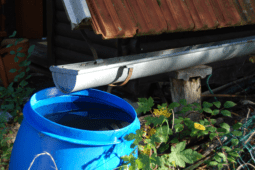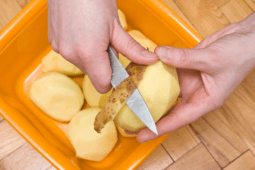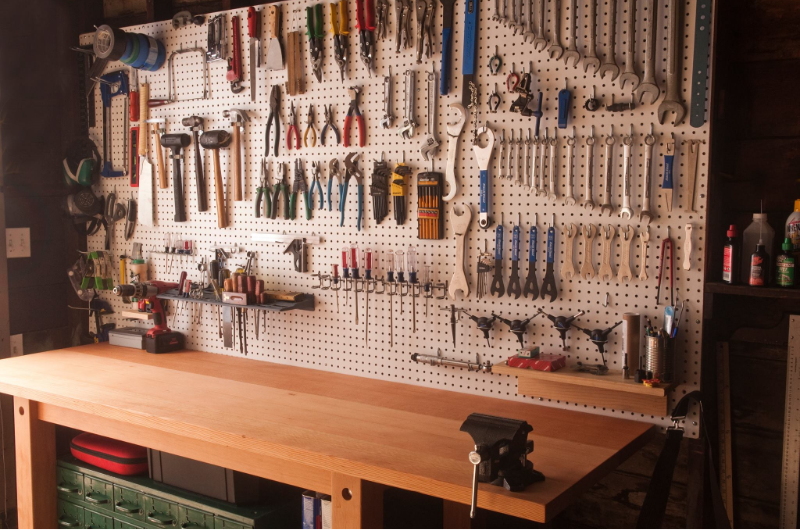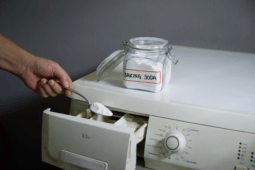This is How You Should Tune Up Your Lawnmower for Spring

Everyone knows the dreaded crankless yank of a neglected lawn-mower cord. You reach down for the handle, brace your legs, and pull the cord with all your might, only to be rewarded with a coughing, sputtering engine, or worse, one that won’t crank at all. Add in a thrown-out lower back, and you could be forgiven for never wanting to go near a lawn mower again.
But it doesn’t have to be that way! You could join ranks of men and women whose mowers start on the first pull! People whose backs remain un-thrown-out, and whose lawns are oft-trimmed, instead of weeks-overdue. Here are some simple steps you should take every spring to maintain your lawn mower in good working order:

Assemble the oil removal kit.
Change the Oil in Your Lawn Mower’s Engine
Lubrication is essential to all engines, and keeping fresh oil in your lawn mower will prevent moving parts from seizing up. Motor oil also contains rust inhibitors that can protect the engine from corrosion, so many experts recommend changing the oil at the end of the mowing season, just before putting the machine away for the winter. But if you’re like me, you probably haven’t done this routine maintenance is a long time … so right now is the best time to do it.

Old, dirty oil, and not enough of it.
1) Start by checking the oil level and quality. Find the oil fill cap, remove and clean the dipstick, then insert it again (screw it all the way back down). Now pull it out and see how far up the stick the oil line goes. Look at the color of the oil residue on the stick. If it’s dark and opaque, it means the oil is old, dirty, and pretty much useless.
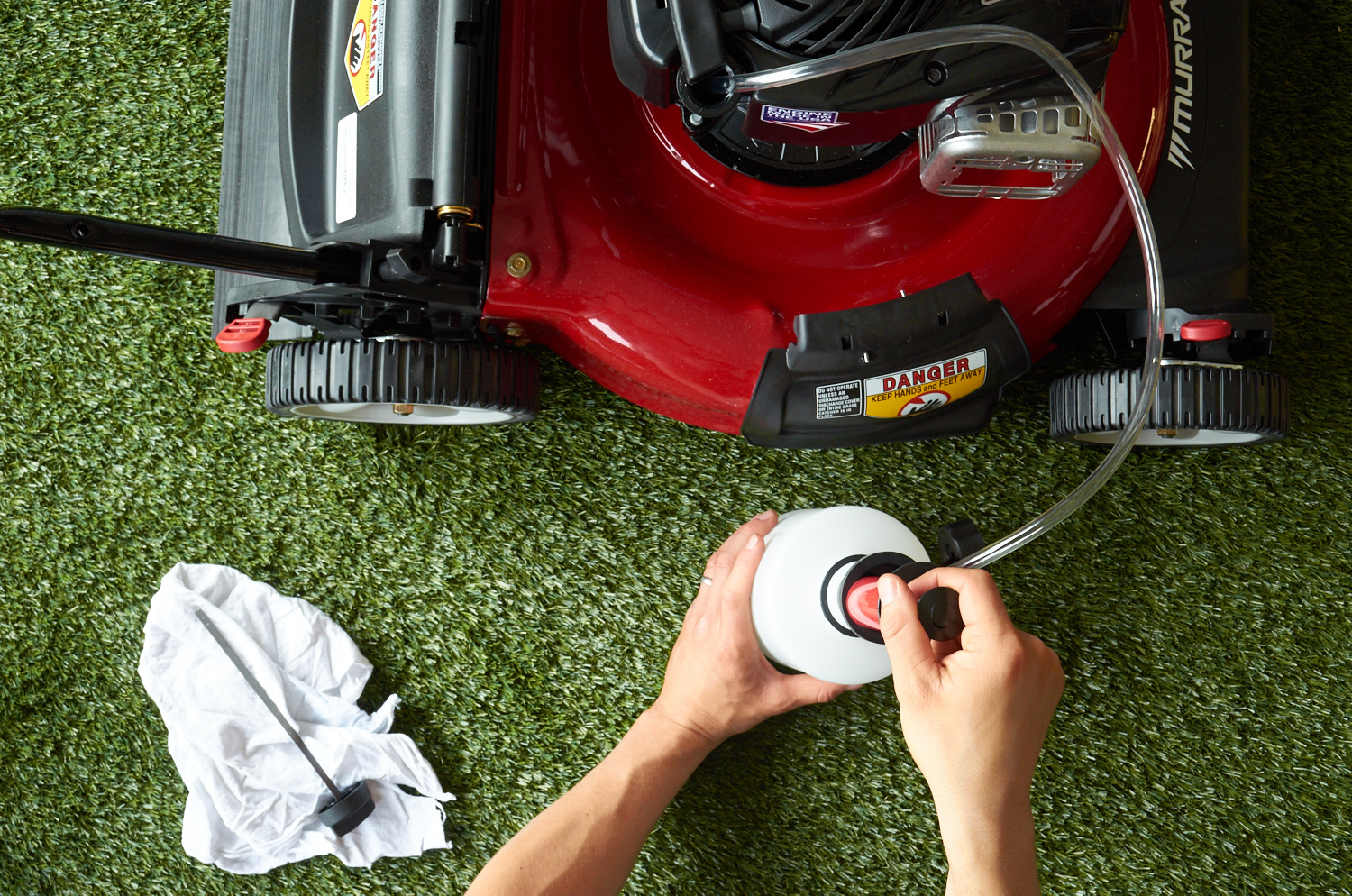
2) Drain all the old oil. First, if possible (i.e. if the mower starts), run the engine for a few minutes. Draining the oil from a warm engine will also get out some of the floating particles that might otherwise settle to the bottom of the oil tank. Now stop the engine and disconnect the spark plug lead.
The best way to get the oil out is using an oil removal kit, like this one from Briggs & Stratton, which is a simple hand-pump that gets the oil out of the motor without having to awkwardly tip the heavy machine on its side.

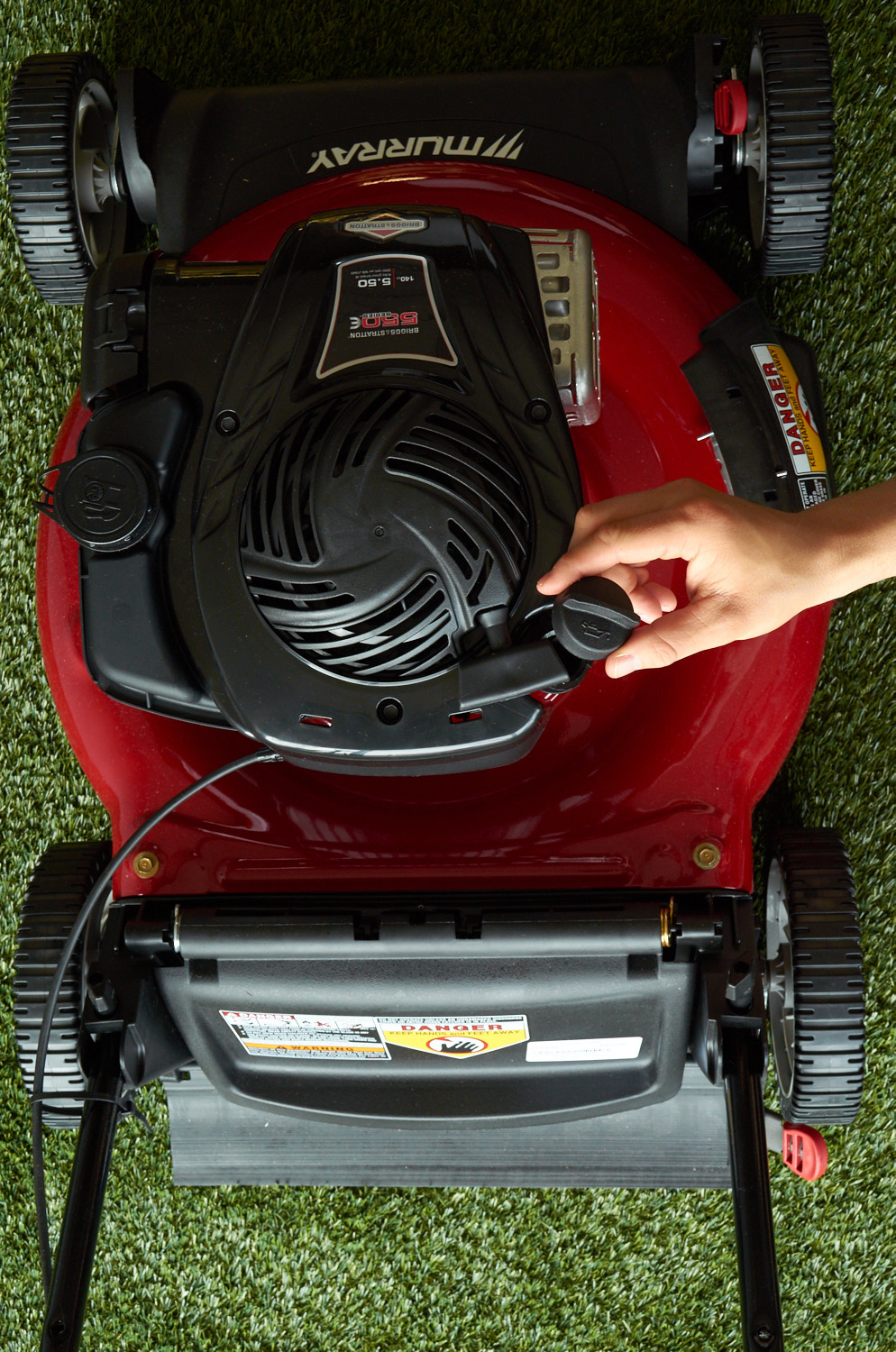
Then, assemble the oil removal kit and insert the hose into the oil tank. After emptying the tank, refill it with fresh oil according to the specifications for your lawn mower model (most small-engine mowers take 10W-30 oil for varying temps, and SAE 30 in warm climates). Replace the oil cap, making sure not to over-tighten.
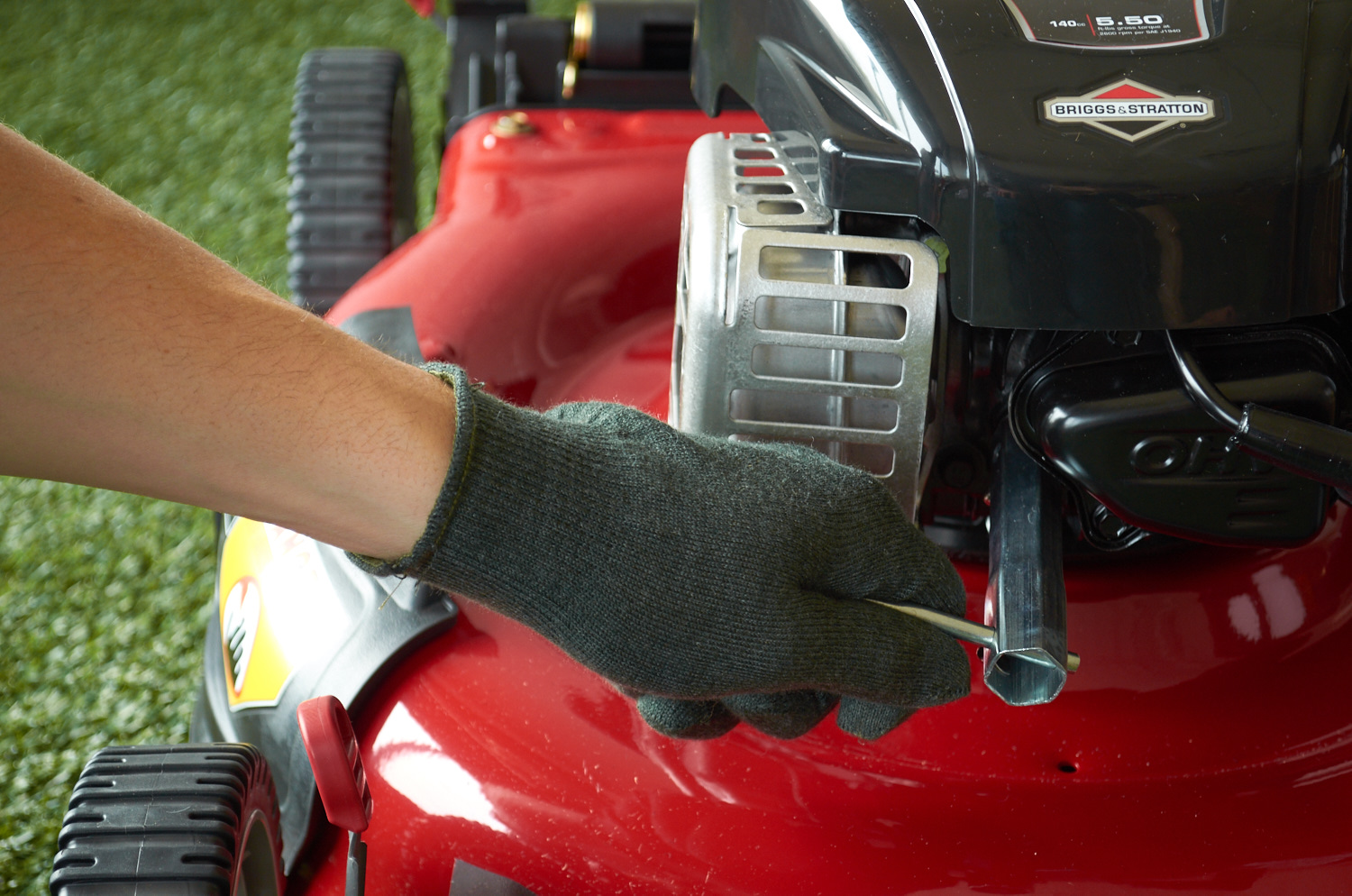
Check and Replace the Spark Plugs
Most manufacturers recommend changing your spark plugs every 100 hours of operation. A fresh spark plug will improve fuel economy and give you more reliable starts.
1) Disconnect the spark plug lead, and remove the old spark plug using a spark plug socket (or a socket wrench). Clean any light debris or deposits on the plug with a wire brush. If the plug is too dirty to clean, or if the porcelain is cracked, it’s time to replace it.
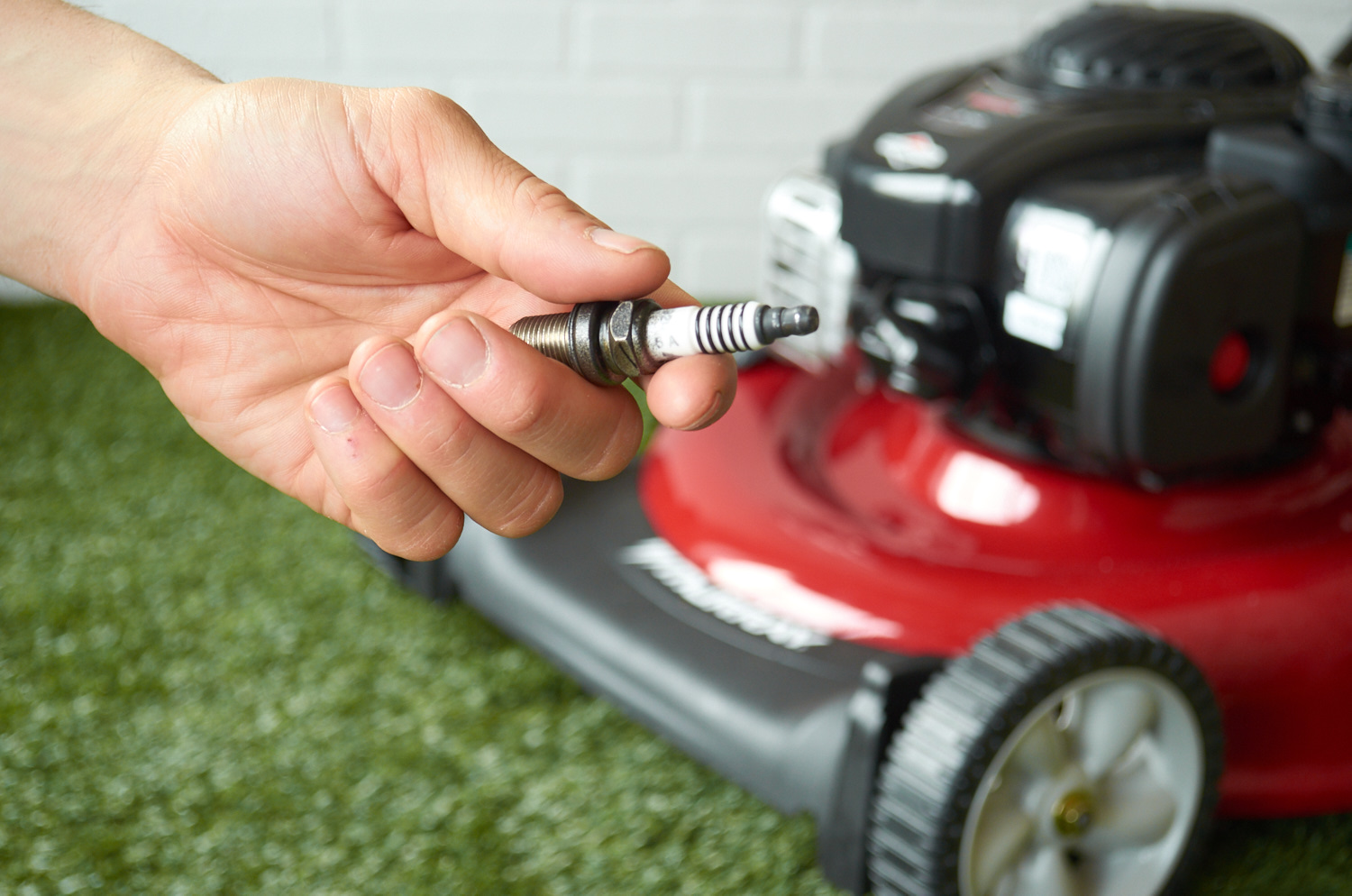
2) If replacing, check the gap on the new spark plug using a spark plug gauge (gap gauge). Your engine probably requires a 0.030″ gap, but check your manufacturer’s specifications to be sure.
3) Replace the plug, hand-tightening to around 15 ft. lbs (not too tight, or you’ll never get it off the next time).
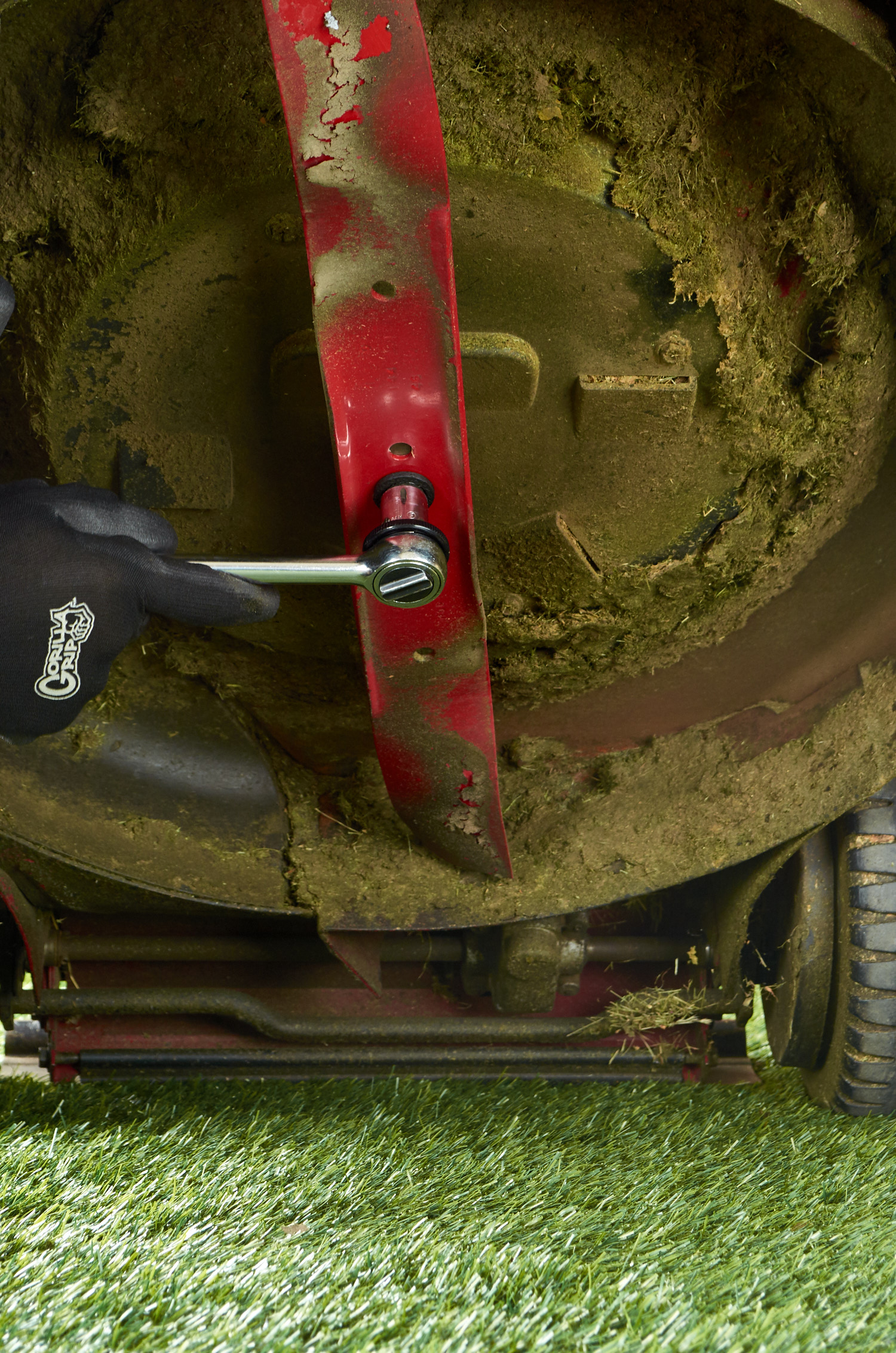
Sharpen or Replace the Blade
A dull lawn mower blade will rip and shred the grass, and often push it over instead of cutting through it. It’s an ineffective way to mow your lawn, puts more stress on your engine, and can damage the health of your turf. Fortunately, removing the blade for sharpening or replacement is easy.
1) Disconnect the spark plug lead. Now tip the lawn mower to the side until the handle is on the ground – do this with a partner – and secure the lawn mower so you can be sure it won’t fall down on you. Use a socket wrench to loosen the nut that holds the blade in place, and then remove it.
2) Sharpen the blade yourself using an angle-grinder, or bring it to your local hardware store or lawn care center and ask them to do it (most places offer this service).
Change the Air Filter
After the oil, the air filter is probably the most important maintenance item on this checklist. It’s crazy-easy to change, and because of the nature of lawn mowing, it gets incredibly dirty and clogged very quickly.
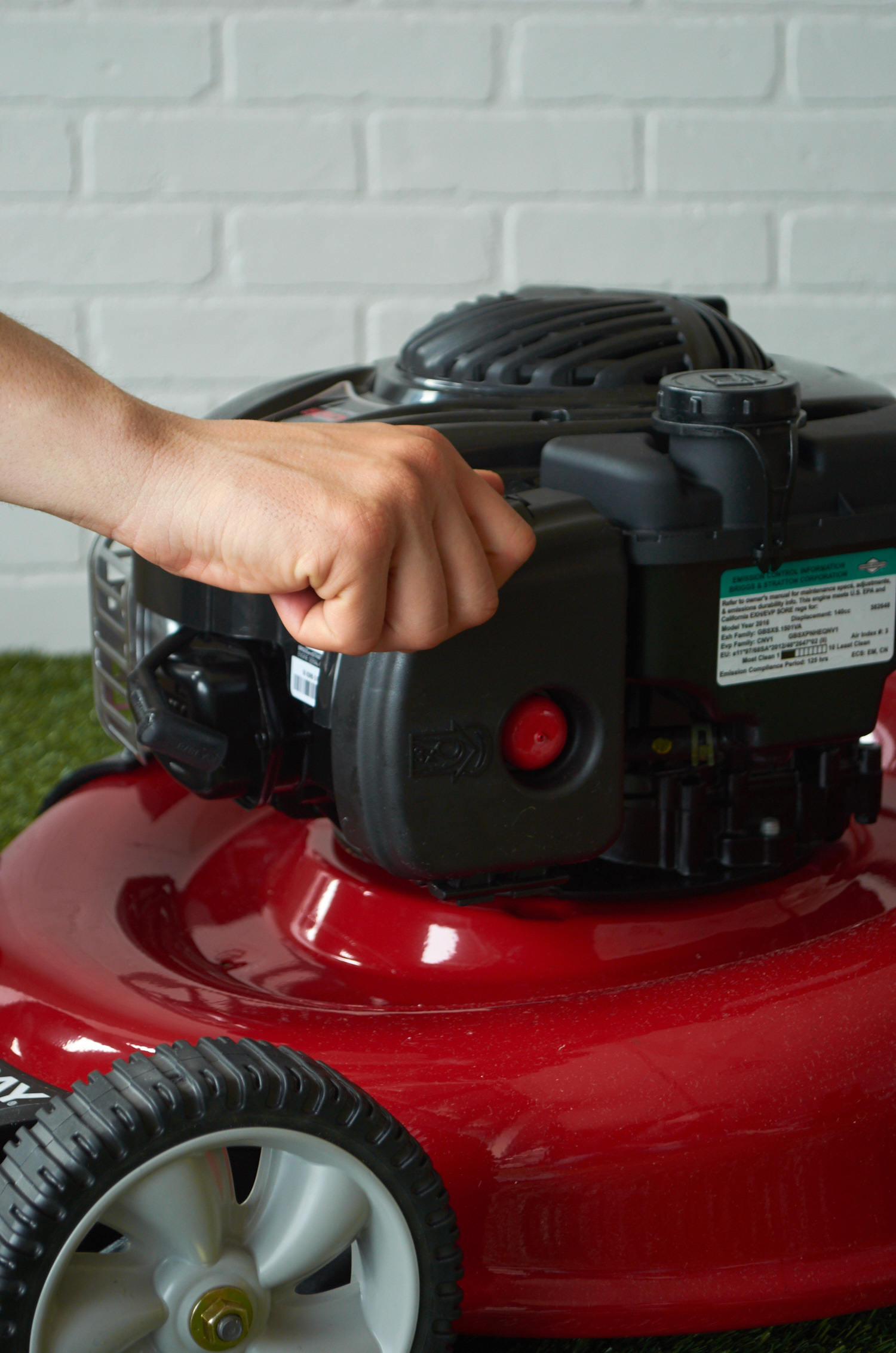
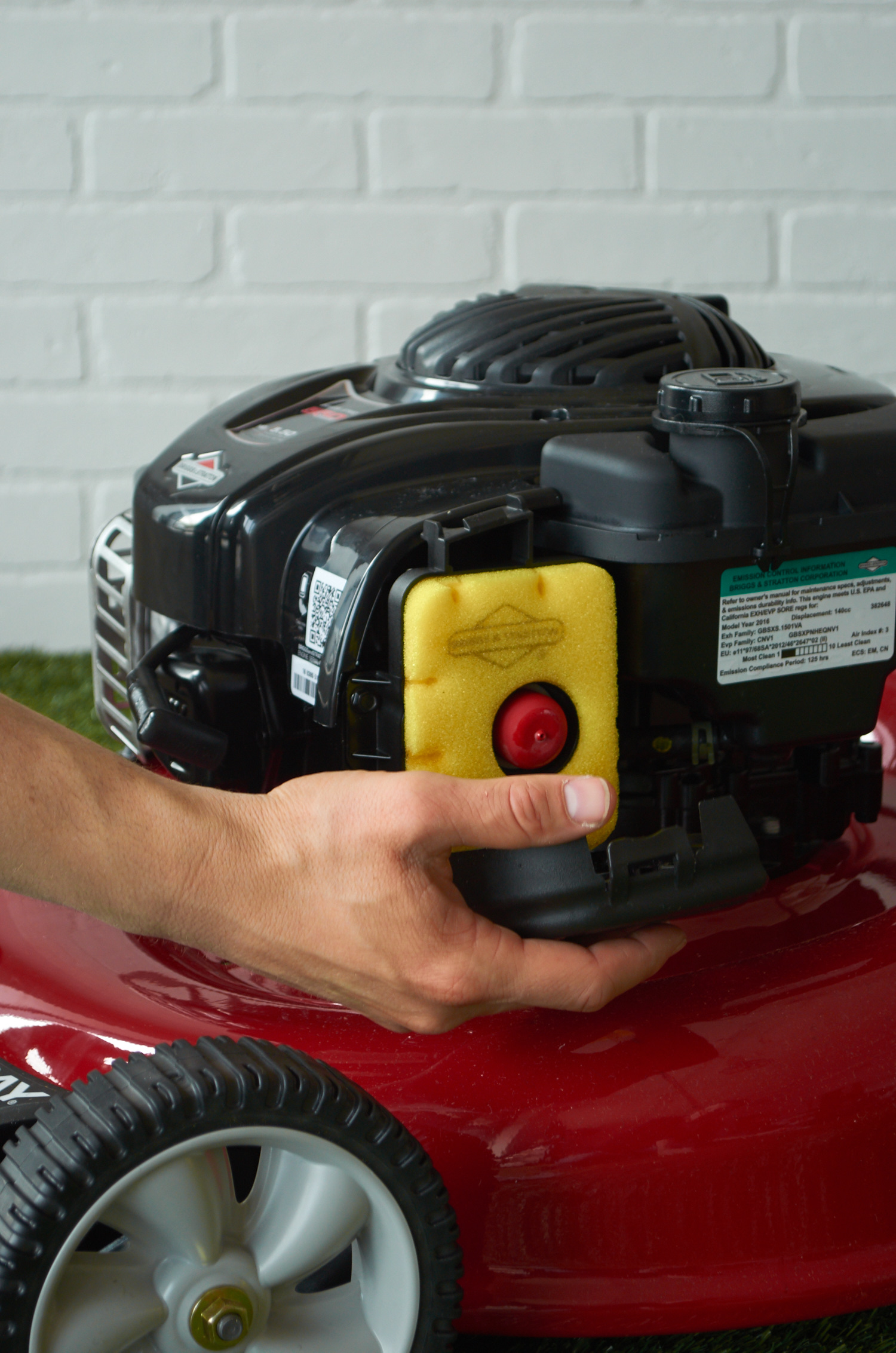
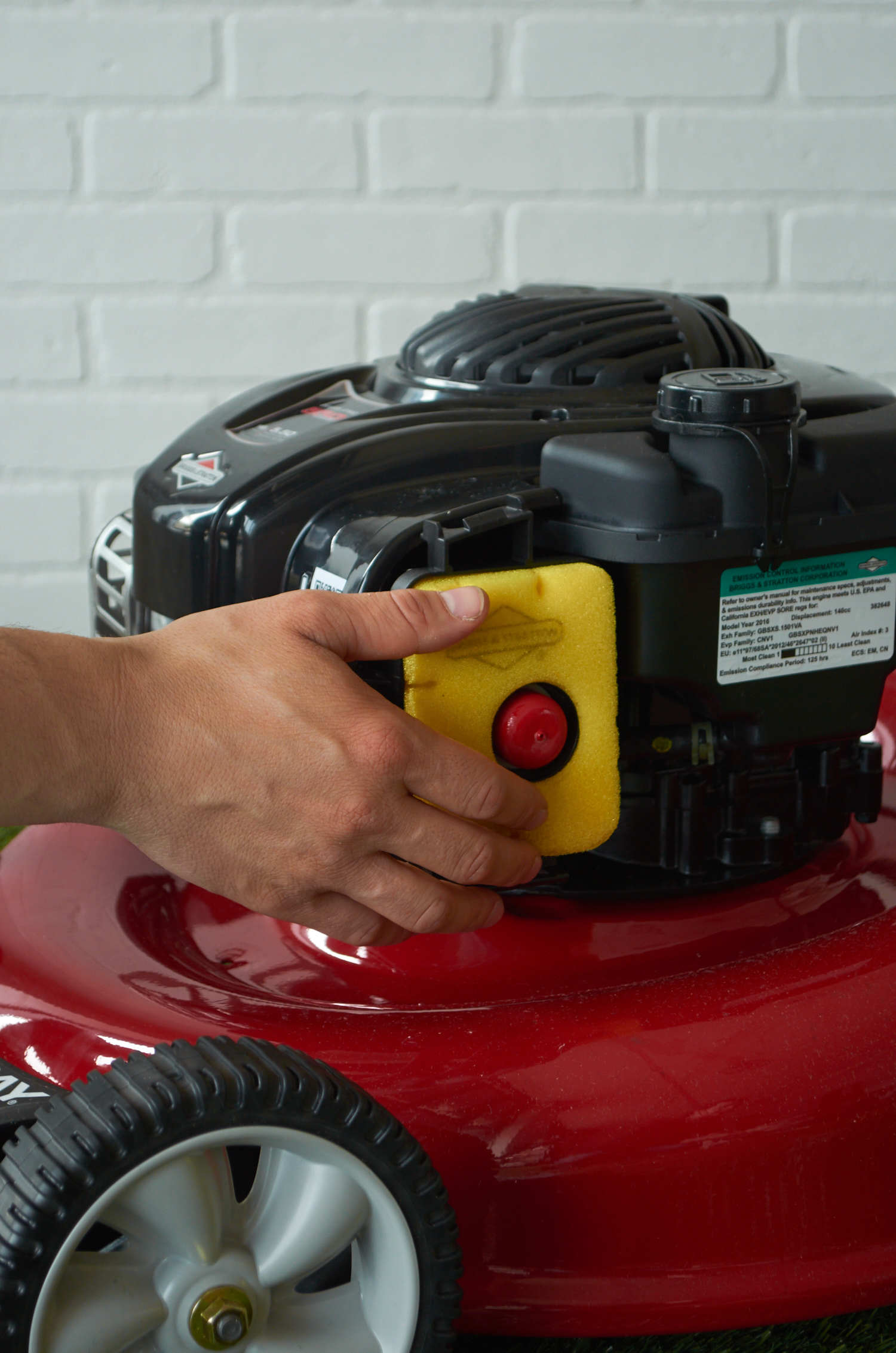
Most lawn mower air filters can be replaced easily by pulling off the filter housing and swapping in a fresh one. Check your manufacturer’s directions to see how your model works, or learn more by following this guide.
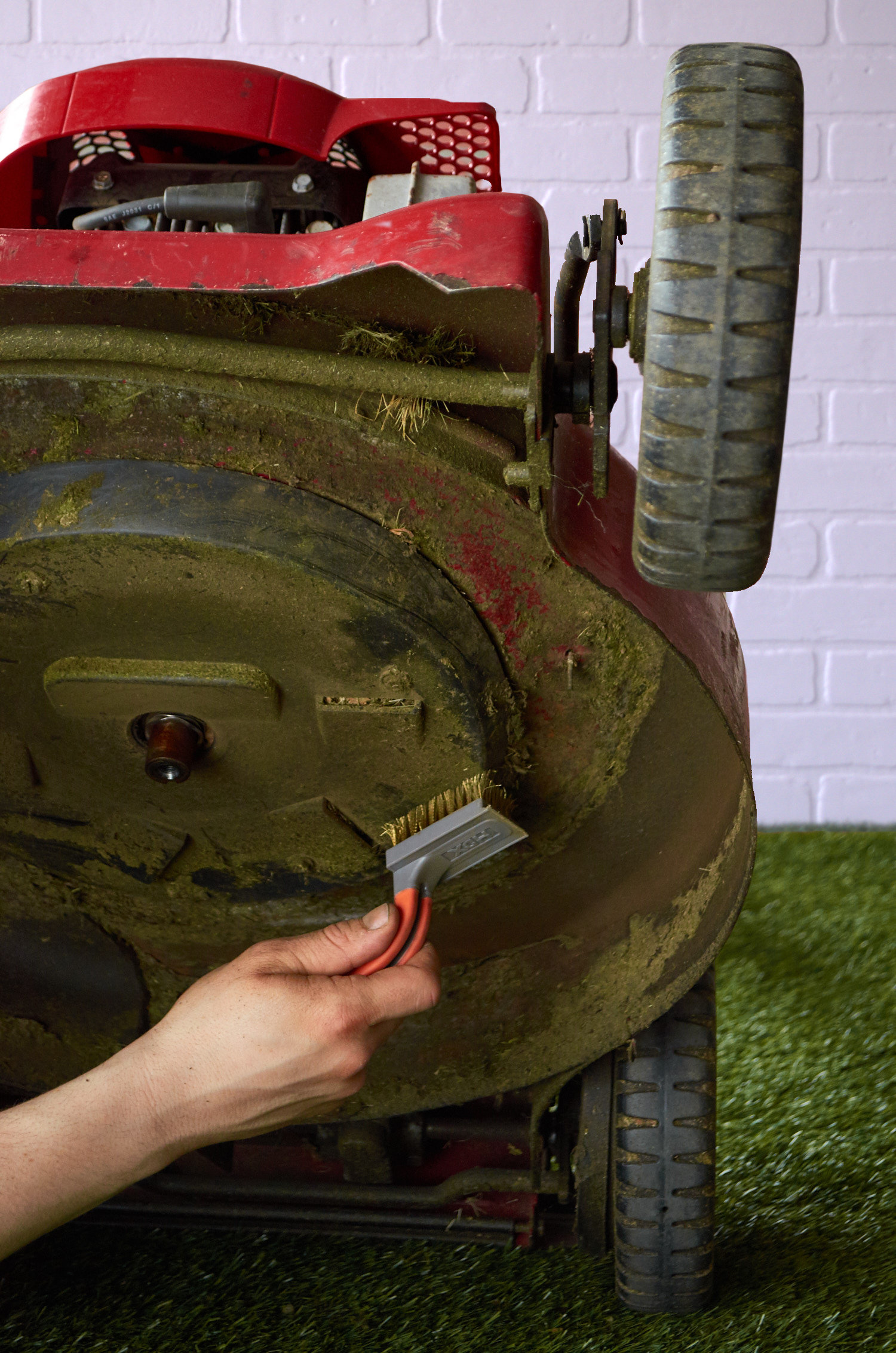
Clean the Undercarriage
How often do you look underneath your lawn mower? If you’re smart, not very. But while you’re going about your daily life, the undercarriage is getting more and more clogged up with old, desiccated grass clippings. Eventually, there’s so much crud down there that it actually impedes the movement of the blade.
So do yourself a favor, while you have the mower tipped up to remove the blade (and the spark plug lead detached so there’s no chance of the thing starting while you’re under there), use a wire brush to clean off the excess deposits. You don’t have to get it sparkling (it’s a yard tool, after all); just get the worst offenders.
Check the Pull Cord
This one’s simple: you don’t want a frayed and failing starting cord to snap on you in mid pull, sending you hurtling backward into the bushes like a noob. Take a second to inspect the cord, especially where it enters the engine housing, to make sure it’s in good shape. If it’s not, replacement is pretty straightforward.

Check out this video for some more lawn mower maintenance tips:
Troubleshooting
Lawn mowers, unlike car engines, haven’t gotten all that much more complicated than they were thirty or forty years ago. So they’re pretty easy to maintain, diagnose, and troubleshoot. Here are a few common problems:
- Starter cord won’t budge. Often, this means the engine flywheel brake is on: make sure you have the release bar on the mower handle pulled all the way down. Another cause could be excessive debris build-up in the mower bed.
- Cord pulls, but engine won’t crank. First, check if you have gas in the thing. Seriously. It’s an easy thing to forget. Old gas can also cause this, so if the gas in the tank is from last season, you may need to drain it and start fresh. Other possible causes: clogged carburetor, dirty air or oil filter, or a bad spark plug.
- Holy smokes! Got a smoke signal coming out of your lawn mower? Could just be because some oil spilled onto the exhaust muffler. Not a big deal as long as it burns off pretty quickly and the mower seems to be running ok. Light-colored smoke could be a more serious symptom, and one you might need to have a mechanic check out.
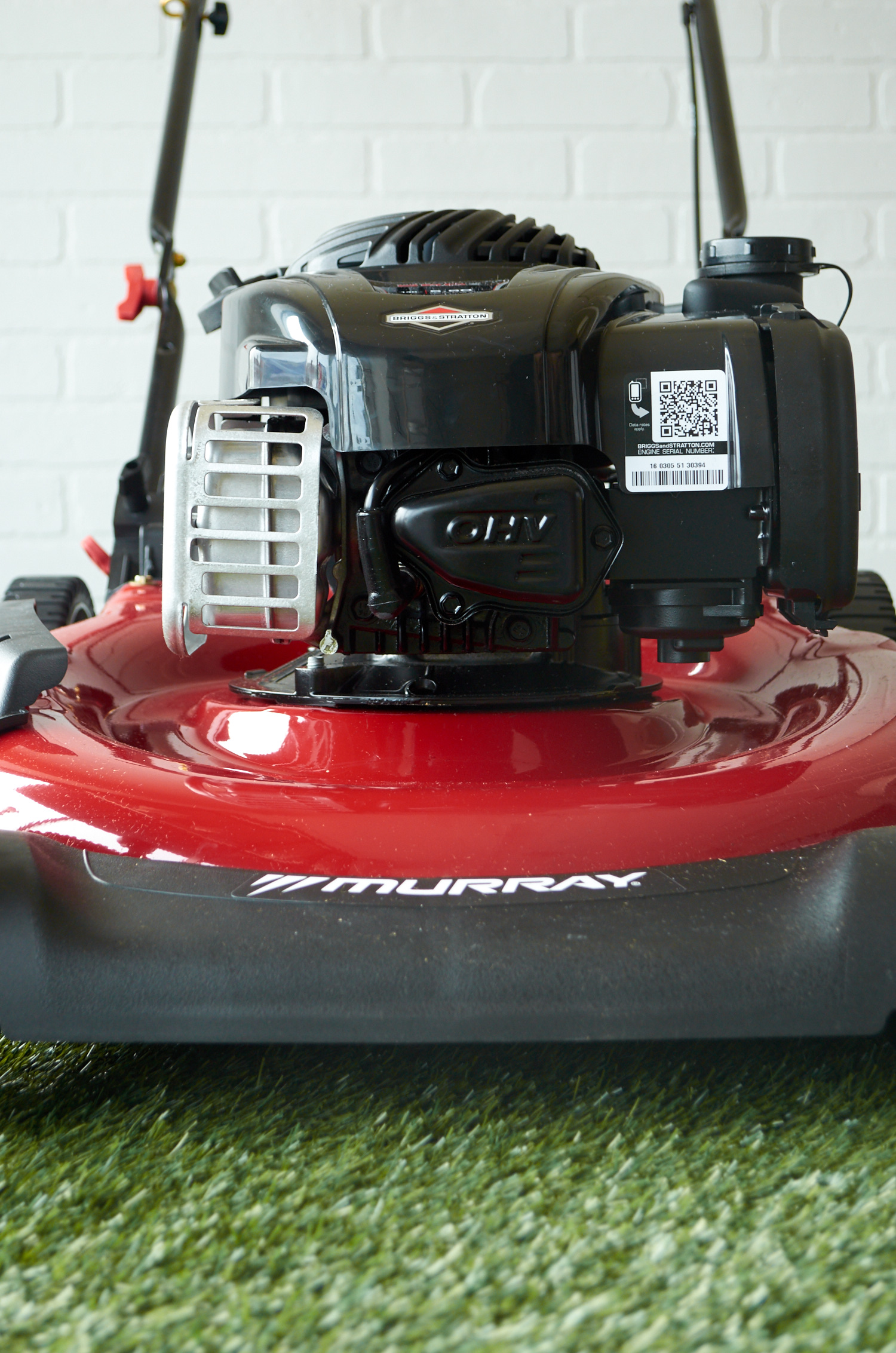
For more small engine maintenance tips, head to Briggs & Stratton’s website, or follow them on Facebook, Twitter, or Instagram
This post is sponsored by Briggs & Stratton, the world’s largest producer of gasoline engines for outdoor power equipment. Thanks for supporting the brands that make ManMade possible.

